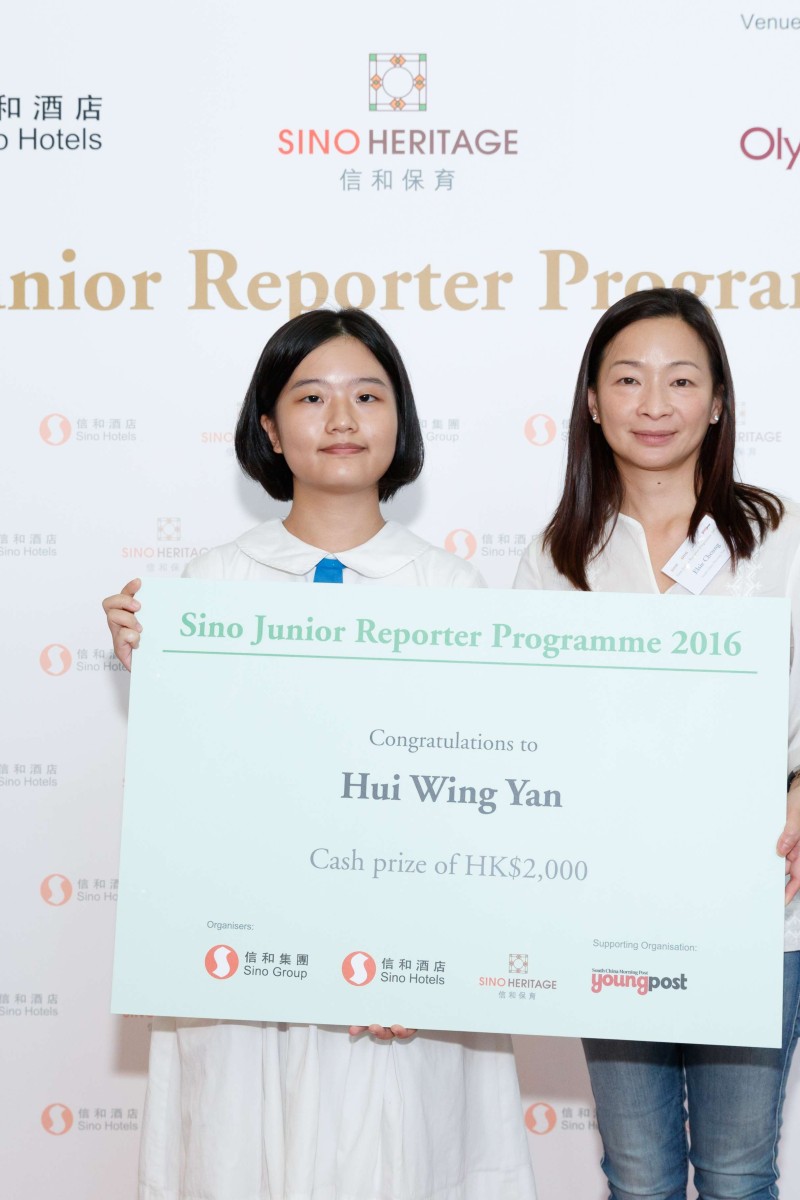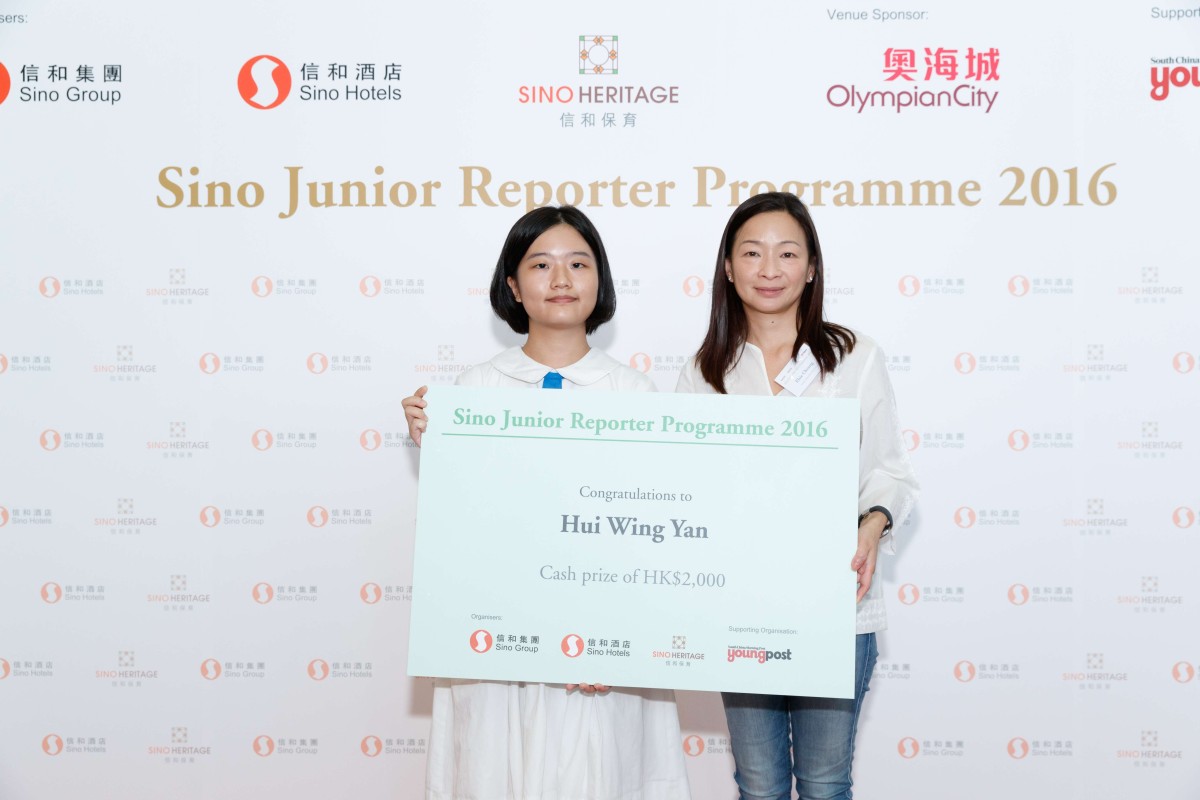
Explore something more than food in Hong Kong’s culinary heritage
 Elsie Cheung (R) presents the award to first runner-up, Hui Wing-Yan of Canossa College.
Elsie Cheung (R) presents the award to first runner-up, Hui Wing-Yan of Canossa College.Sixty shortlisted Form Four students experienced journalism in the Junior Reporters Programme 2016, which was jointly organised by Sino Group and the South China Morning Post’s Young Post. The topic this year was Hong Kong’s culinary heritage. Attending the training workshop in Tsim Sha Tsui Centre on June 25, students learnt practical skills from an experienced journalist and had the chance to interview a renowned chef.
Kenneth Yuen, the executive chef at the Royal Pacific Hotel & Towers, shared his hardships in becoming an excellent chef. He recalled the early days when he had just started his career at the Furama Hotel and was still just a junior cook required to do chores such as washing pots and finding sources of food.
“It was tough, but I felt very happy. That’s because we worked as a family, which made it easier to cope with any difficulties,” he says.
After being promoted to the second-in-charge cook at the Regal Hotel, Yuen says he found his ability was far from good enough. So he decided to study hotel management at the Polytechnic University.
“I didn’t have any day off in those six years,” he grinned. “You have to really persist in order to finish the course, but it was worth it.”
All his efforts paid off, though, and after over 20 years of hard work, he became the “Master Chef” of the Royal Pacific Hotel in 2010.
When Yuen was asked what traditional food triggered childhood memories, he was quick to answer. “It would be white sugar pudding,” he says, recalling that he grew up on a housing estate in Hong Kong. Around 3pm, a woman would come around carrying a basket and shouting out the names of the sweet desserts. All the children would rush to the door of their homes.
“Whenever I see the pudding, all my childhood memories come back. That’s what food can sometimes do,” he explained. “When we talk about food, it’s never about how expensive it is. Instead, it is about how much the food can satisfy us.”
He also told stories about what went into the lunchboxes, which the students enjoyed before the interview. The lunchboxes included Vitasoy, a chicken leg marinated with Swiss sauce, sweet glutinous rice pudding with red beans, barbecue pork buns, and a lo po pang snack.
For example, the story behind Swiss sauce goes back to the Tai Ping Restaurant. A foreign visitor there liked the sweet taste of the sauce very much. However, the chef mixed up the pronunciation of the words “sweet” and “Swiss”. As a result, it has been called Swiss sauce till nowadays.
He also mentioned that barbecue pork buns are an example of “east meeting west”, which is a special feature of Hong Kong’s food culture and represents the identity of Hong Kong to a certain extent.
Besides the workshop, students visited the Tao Heung Museum at Fo Tan on June 9. With the guidance of Ou-Yang, students got a clearer picture of old Hong Kong’s food culture.